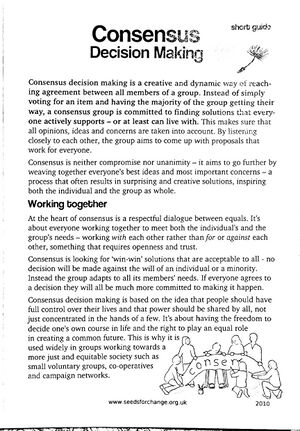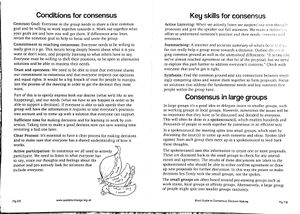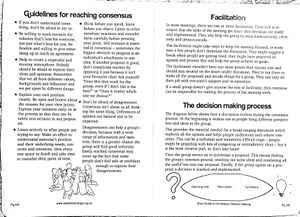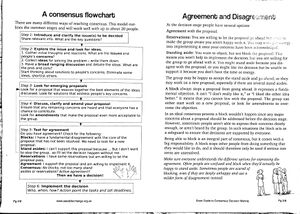|
|
| (21 intermediate revisions by the same user not shown) |
| Line 1: |
Line 1: |
| <div class="article WINWIN layout-2" id="WINWIN"> | | <div class="article WINWIN layout-2" id="WINWIN"> |
| [[File:Flowchart.png|thumb|class=title_image| Caption here]] | | <div class="hide-from-website"> |
| | [[File:Flowchart.png|thumb|class=title_image|Flowchart of the discussion process]] |
| | </div> |
| | <div class="hide-from-book scriptothek"> |
| | [[File:Flowchart.png|thumb|Flowchart of the discussion process]] |
| | |
| | [[File:Consensus1.jpg|thumb|Collected hand-out from a workshop for art and design educators, reactivated during H&D Algorithmic Consensus Meetup, 2021. https://hackersanddesigners.nl/s/Events/p/H%26D_Meetup_1%3A_Algorithmic_Consensus |
| | Credits: Workshop: Angela Jerardi, 2019, Hand-out: Seeds for change https://seedsforchange.org.uk/]] |
| | |
| | [[File:Consensus2.jpeg|thumb|]] |
| | |
| | [[File:Consensus3.jpeg|thumb|]] |
| | |
| | [[File:Consensus4.jpeg|thumb|]] |
| | </div> |
|
| |
|
| === WINWIN === | | === WINWIN === |
| <span class="author">James Bryan Graves and Nienke Huitenga-Broeren </span> | | <span class="author">James Bryan Graves and Nienke Huitenga-Broeren</span> |
| WINWIN is an interactive debate platform and immersive experience that was initiated by James Bryan Graves and Nienke Huitenga-Broeren. It’s an algorithm that builds on consensus principles and guides participants through a conversation about a polarizing societal issue. WINWIN embraces consensus over adversity, and aims to facilitate and find common ground among its participants.
| |
|
| |
|
| | WINWIN is an interactive debate platform and immersive experience that was initiated by James Bryan Graves and Nienke Huitenga-Broeren. It’s an algorithm that builds on [[#On_consensus,_in_two_parts|consensus principles]] and guides participants through a conversation about a polarizing societal issue. WINWIN embraces consensus over adversity, and aims to facilitate and find common ground among its participants. |
| The concept of WINWIN was inspired by digital consensus algorithms. Participants are installed temporarily as “nodes” into a “consensus-zone-data center” where an “immersive” hood and soundscape preserve attention as well as the anonymity of a person-node. | | The concept of WINWIN was inspired by digital consensus algorithms. Participants are installed temporarily as “nodes” into a “consensus-zone-data center” where an “immersive” hood and soundscape preserve attention as well as the anonymity of a person-node. |
| | |
| | [[File:Top_CTA_02.jpg|thumb|Image from a WINWIN performance. Participants wearing heads that gives them privacy while responding to the questions on their phones. On the projection behind them the process of the discussion is visible to the audience]] |
|
| |
|
| Participants operate individually in a group experience, in a bubble while connected. A person-node always knows the general “state of the system” (the course and status of the conversation) without knowing the details about how many other person-nodes are also participating in the system. Together—yet apart—participants dive into the nuances of their opinions. The course of the conversation evolves as a tree-branch-narrative. Participants encounter the responses of their fellow participants one by one on their mobile phones. Every time consensus is reached, WINWIN moves the participant up the branch and back to where unresolved statements await calibration. | | Participants operate individually in a group experience, in a bubble while connected. A person-node always knows the general “state of the system” (the course and status of the conversation) without knowing the details about how many other person-nodes are also participating in the system. Together—yet apart—participants dive into the nuances of their opinions. The course of the conversation evolves as a tree-branch-narrative. Participants encounter the responses of their fellow participants one by one on their mobile phones. Every time consensus is reached, WINWIN moves the participant up the branch and back to where unresolved statements await calibration. |
| | We’re fascinated by disruptive governing interventions and movements like the Occupy movement. Often, fuelled by idealism, groups get waylaid in their denouncement of the issues they collectively oppose. As such, such groups—due to the emotional investment of their participants—fail to succeed in agreeing internally on how things should be different, and how to move forward. Such groups often collapse just before their moment of breakthrough. |
| | WINWIN came into being during a conversation between Nienke and James about how algorithms might play a role in moving forward together as a society, while also being respectful of people’s differences and diverging realities. WINWIN was also conceived of as a “[[#Re-_and_Un-_Defining_Tools|tool]]” for overcoming the dysfunctional and toxic debate styles that prevail on the Internet today. It is likely that you will never agree with a “flat Earther” on the belief that the Earth is indeed flat. But you might find a common ground in questioning the manner in which scientific information is shared or revealed to the public. On that point of agreement you could then act together and initiate a new conversation. The intention of WINWIN is to help participants dive deeper and craft the most constructive conversation possible on a strongly polarizing topic. |
| | |
| | <span class="page-break"> </span> |
| | |
| | [[File:Screenshot_win-win.png|class=wide_image|thumb|Screenshot of a discussion and the decision tree of WinWin]] |
| | |
| | Image from a WINWIN performance. Participants wearing heads that gives them privacy while responding to the questions on their phones. On the projection behind them the process of the discussion is visible to the audience]] |
|
| |
|
| We’re fascinated by disruptive governing interventions and movements like the Occupy movement. Often, fuelled by idealism, groups get waylaid in their denouncement of the issues they collectively oppose. As such, such groups—due to the emotional investment of their participants—fail to succeed in agreeing internally on how things should be different, and how to move forward. Such groups often collapse just before their moment of breakthrough .
| | '''Statements discussed by WINWIN participants during the H&D meetup on Algorithmic Consensus<ref>https://hackersanddesigners.nl/s/Activities/p/H%26D_Meetup_1%3A_Algorithmic_Consensus</ref>:''' |
| | * “Consensus decision making is a more inclusive way of reaching agreement between all members of a group, than for instance majority models”. |
| | * “Consensus decision making processes can help to create a less polarized online discourse”. |
| | * “Consensus decision making is an inefficient way to come to an agreement in a group”. |
|
| |
|
| WINWIN came into being during a conversation between Nienke and James about how algorithms might play a role in moving forward together as a society, while also being respectful of people’s differences and diverging realities. WINWIN was also conceived of as a “tool” for overcoming the dysfunctional and toxic debate styles that prevail on the Internet today. It is likely that you will never agree with a “flat Earther” on the belief that the Earth is indeed flat. But you might find a common ground in questioning the manner in which scientific information is shared or revealed to the public. On that point of agreement you could then act together and initiate a new conversation.
| | '''There were three moments of consensus on the platform. Everyone agreed on:''' |
|
The intention of WINWIN is to help participants dive deeper and craft the most constructive conversation possible on a strongly polarizing topic.
| | * “One might say all online discourse has established it is polarization. Consensus might carry potential to create more nuance.” |
| | * “Homogeneous groups have an easier time agreeing on issues" |
| | * “A homogeneous group doesn't necessarily reach consensus, and a heterogeneous group doesn't necessarily have to be at odds.” |
| | <br> |
| | <small>'''James Bryan Graves''' is a software engineer, computer scientist, lecturer, and community organizer. James moved to the Netherlands in 2009 from the United States of America. He founded Hackers & Founders Amsterdam in 2011, a community of entrepreneurs and programmers which later additionally opened a non-profit community organized co-working space in the Herengracht in Amsterdam in 2014. In 2013 James furthermore started Hackers & Designers together with Anja Groten and Selby Gildemacher.<br> |
|
| |
|
| '''Statements tested by WINWIN participants:''' | | '''Nienke Huitenga-Broeren''' is an immersive designer and strategist. In her work she blends media strategy, digital concepts and immersive experiences. She is a co-founder of Hackastory, a startup fostering innovation in journalism. In 2019 she finished her first virtual reality production ROZSYPNE, an interactive VR-story about an old lady trying to persevere daily life in the Eastern-Ukrainian warzone, with the MH17-crash at her doorstep. She co-directed it with Lisa Weeda and produced it with Studio ZZZAP. In 2019 she also participated in the last Sandberg@Mediapark talent incubator where she created together with hacker James Bryan Graves WINWIN, a consensus algorithm and immersive discussion experience—for finding consensus in dealing with the tough questions we currently face worldwide. |
| * “A more sustainable world does not start at home” – IMPAKT Festival, Utrecht (2020)
| | </small> |
| * “Society has the right to treat an unvaccinated person differently” – SETUP, Utrecht (2021)
| |
| * “Our government should trust its citizens, without the use of technology” – Premiere of WINWIN, Utrecht (2021)
| |
| * “Abortion law should be determined by referendums where only people with a uterus can vote” – Fourth year high school students, Wageningen (2021)
| |
| </div> | | </div> |
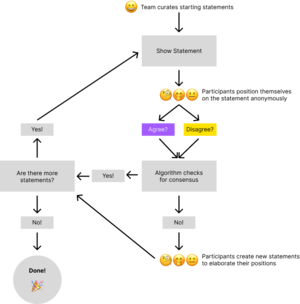
Flowchart of the discussion process

Flowchart of the discussion process
WINWIN
James Bryan Graves and Nienke Huitenga-Broeren
WINWIN is an interactive debate platform and immersive experience that was initiated by James Bryan Graves and Nienke Huitenga-Broeren. It’s an algorithm that builds on consensus principles and guides participants through a conversation about a polarizing societal issue. WINWIN embraces consensus over adversity, and aims to facilitate and find common ground among its participants.
The concept of WINWIN was inspired by digital consensus algorithms. Participants are installed temporarily as “nodes” into a “consensus-zone-data center” where an “immersive” hood and soundscape preserve attention as well as the anonymity of a person-node.
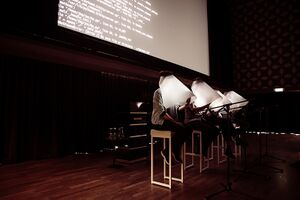
Image from a WINWIN performance. Participants wearing heads that gives them privacy while responding to the questions on their phones. On the projection behind them the process of the discussion is visible to the audience
Participants operate individually in a group experience, in a bubble while connected. A person-node always knows the general “state of the system” (the course and status of the conversation) without knowing the details about how many other person-nodes are also participating in the system. Together—yet apart—participants dive into the nuances of their opinions. The course of the conversation evolves as a tree-branch-narrative. Participants encounter the responses of their fellow participants one by one on their mobile phones. Every time consensus is reached, WINWIN moves the participant up the branch and back to where unresolved statements await calibration.
We’re fascinated by disruptive governing interventions and movements like the Occupy movement. Often, fuelled by idealism, groups get waylaid in their denouncement of the issues they collectively oppose. As such, such groups—due to the emotional investment of their participants—fail to succeed in agreeing internally on how things should be different, and how to move forward. Such groups often collapse just before their moment of breakthrough.
WINWIN came into being during a conversation between Nienke and James about how algorithms might play a role in moving forward together as a society, while also being respectful of people’s differences and diverging realities. WINWIN was also conceived of as a “tool” for overcoming the dysfunctional and toxic debate styles that prevail on the Internet today. It is likely that you will never agree with a “flat Earther” on the belief that the Earth is indeed flat. But you might find a common ground in questioning the manner in which scientific information is shared or revealed to the public. On that point of agreement you could then act together and initiate a new conversation. The intention of WINWIN is to help participants dive deeper and craft the most constructive conversation possible on a strongly polarizing topic.
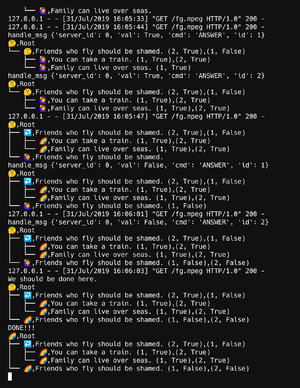
Screenshot of a discussion and the decision tree of WinWin
Image from a WINWIN performance. Participants wearing heads that gives them privacy while responding to the questions on their phones. On the projection behind them the process of the discussion is visible to the audience]]
Statements discussed by WINWIN participants during the H&D meetup on Algorithmic Consensus[1]:
- “Consensus decision making is a more inclusive way of reaching agreement between all members of a group, than for instance majority models”.
- “Consensus decision making processes can help to create a less polarized online discourse”.
- “Consensus decision making is an inefficient way to come to an agreement in a group”.
There were three moments of consensus on the platform. Everyone agreed on:
- “One might say all online discourse has established it is polarization. Consensus might carry potential to create more nuance.”
- “Homogeneous groups have an easier time agreeing on issues"
- “A homogeneous group doesn't necessarily reach consensus, and a heterogeneous group doesn't necessarily have to be at odds.”
James Bryan Graves is a software engineer, computer scientist, lecturer, and community organizer. James moved to the Netherlands in 2009 from the United States of America. He founded Hackers & Founders Amsterdam in 2011, a community of entrepreneurs and programmers which later additionally opened a non-profit community organized co-working space in the Herengracht in Amsterdam in 2014. In 2013 James furthermore started Hackers & Designers together with Anja Groten and Selby Gildemacher.
Nienke Huitenga-Broeren is an immersive designer and strategist. In her work she blends media strategy, digital concepts and immersive experiences. She is a co-founder of Hackastory, a startup fostering innovation in journalism. In 2019 she finished her first virtual reality production ROZSYPNE, an interactive VR-story about an old lady trying to persevere daily life in the Eastern-Ukrainian warzone, with the MH17-crash at her doorstep. She co-directed it with Lisa Weeda and produced it with Studio ZZZAP. In 2019 she also participated in the last Sandberg@Mediapark talent incubator where she created together with hacker James Bryan Graves WINWIN, a consensus algorithm and immersive discussion experience—for finding consensus in dealing with the tough questions we currently face worldwide.

